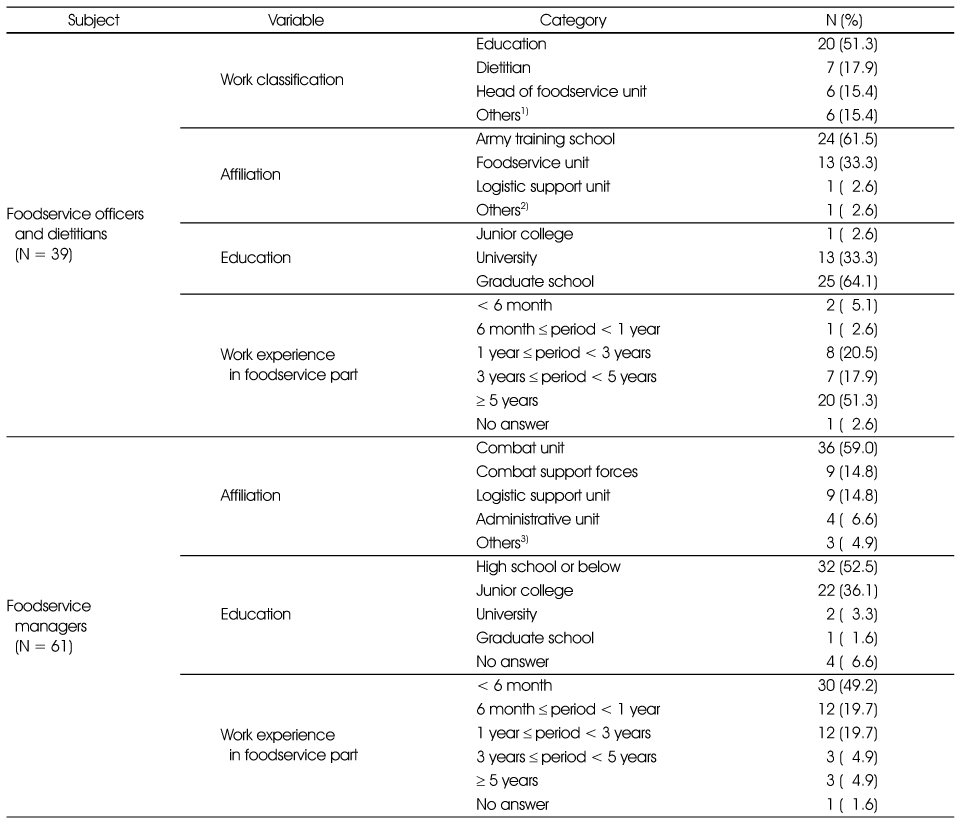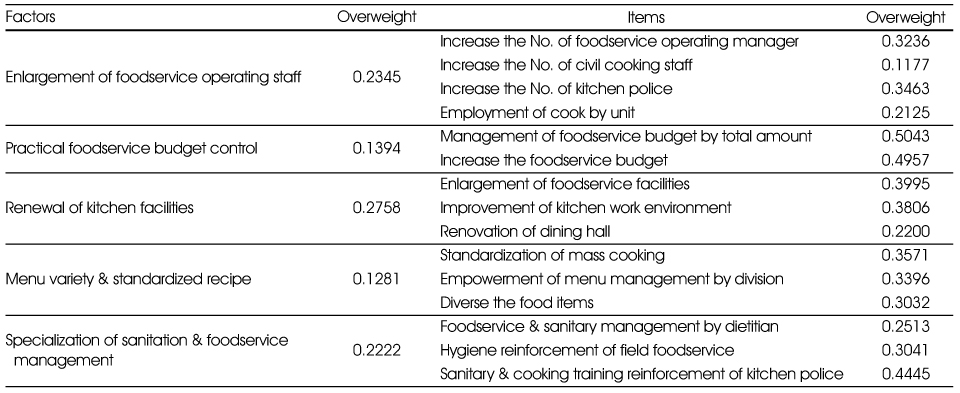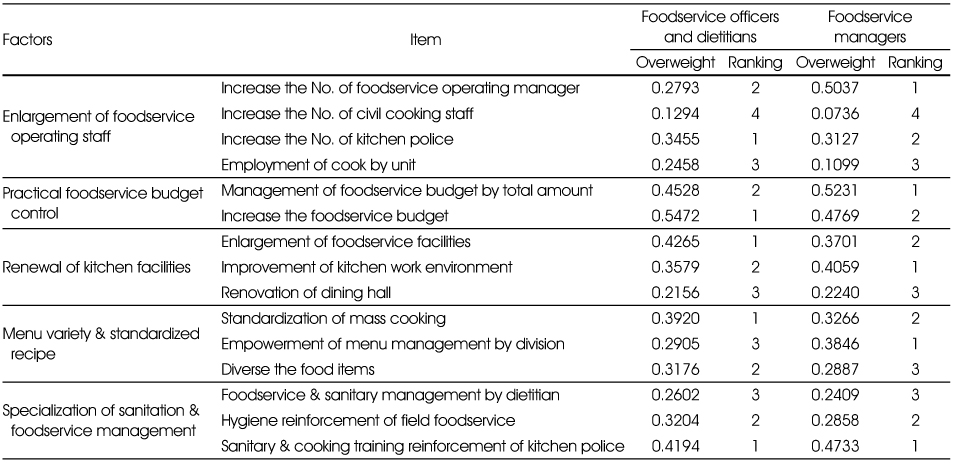Articles
- Page Path
- HOME > Korean J Community Nutr > Volume 19(1); 2014 > Article
-
Original Article
- Application of Analytical Hierarchy Process in Analyzing the Priorities of Strategy for Improving the Army Military Foodservice
- Seung-Hee Baek
-
Korean Journal of Community Nutrition 2014;19(1):51-59.
DOI: https://doi.org/10.5720/kjcn.2014.19.1.51
Published online: February 28, 2014
Department of Foodservice management, Shingu College, Seongnam, Korea.
- Corresponding author: Seung-Hee Baek, 377 Gwangmyeong-ro, Seongnam, Korea. Tel: (031) 740-1571, Fax: (031) 740-1590, moscow@shingu.ac.kr
Copyright © 2014 The Korean Society of Community Nutrition
This is an Open-Access article distributed under the terms of the Creative Commons Attribution Non-Commercial License (http://creativecommons.org/licenses/by-nc/3.0/) which permits unrestricted non-commercial use, distribution, and reproduction in any medium, provided the original work is properly cited.
- 521 Views
- 1 Download
- 1 Crossref
Figure & Data
REFERENCES
Citations

- Analysis of Perception and Satisfaction of Military Foodservice that are Provided According to the Ranks of the Soldiers
Jun-Hee Kim, Se-Jeong Bae
Korean Journal of Community Nutrition.2015; 20(1): 53. CrossRef

Fig. 1
General characteristics of the subjects
1) Instructor, transportation battalion, 2) Ministry of National Defense, 3) Army hospital, boot training battalion
Overall Overweight of factors and items
Overall ranking of factors by groups
Ranking of items by groups
1) Instructor, transportation battalion, 2) Ministry of National Defense, 3) Army hospital, boot training battalion

 KSCN
KSCN





 PubReader
PubReader Cite
Cite


